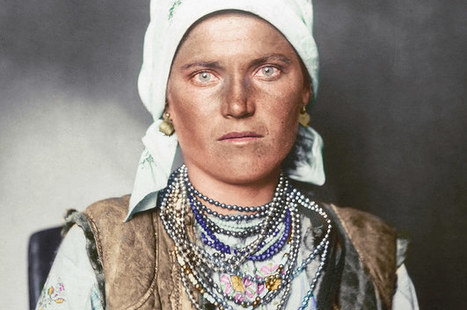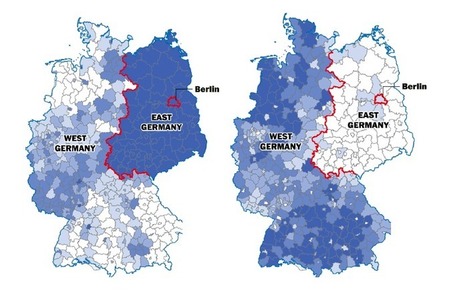Here are just a handful of the 12 million men, women, and children who arrived at Ellis Island, New York, between 1892 and 1954 to start a new life in the USA, often dressed in their finest clothes. The portraits show immigrants wearing the national dress of their country of origin, including military uniforms from Albania, bonnets from the Netherlands, and clothing of Sámi people from the Arctic regions.
The photographs were taken between 1906 and 1914 by amateur photographer Augustus Francis Sherman, the chief registry clerk at Ellis Island, then the country’s busiest immigration station. In 1907 some of the photos were published by National Geographic.
Get Started for FREE
Sign up with Facebook Sign up with X
I don't have a Facebook or a X account

 Your new post is loading... Your new post is loading...
|

Peter Phillips's curator insight,
November 6, 2014 11:43 AM
50 years of communist rule still affect opportunities in Germany today, as these maps show. What they don't show is the social mirror that each provides to the other and the rich discussions about social policy that result. Reunification has been an expensive exercise for Germany, however one that it is committed to.
Jacob Conklin's curator insight,
February 12, 2015 6:20 PM
The Soviet Union collapsed in 1991, but its influence is still present in today's Germany. History plays a key role in the shaping of political boundaries and that history is clearly evident in Germany. The line where the Berlin wall once stood still divides the country economically. The western part of Germany is far more economically affluent than the east. The USSR may be gone, but its influence still remains.
BrianCaldwell7's curator insight,
April 5, 2016 8:14 AM
These two maps (unemployment on the left and disposable income on the right) are but two examples in this article that highlights the lingering distinctions between the two parts of Germany that were reunited 25 years ago. The social geographies imposed by the Iron Curtain and the Berlin Wall are still being felt from this relic border and will for years to come. Tags: Germany, industry, labor, economic, historical, political, borders. |










